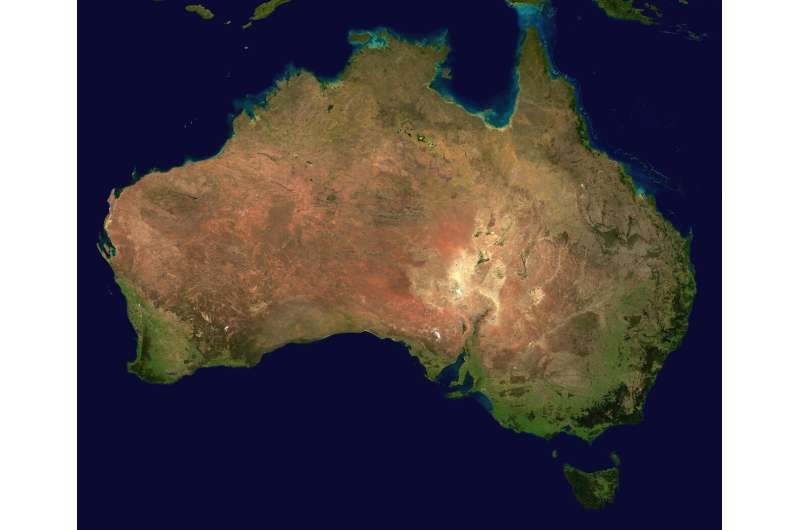This article has been reviewed according to Science X's editorial process and policies. Editors have highlighted the following attributes while ensuring the content's credibility:
fact-checked
peer-reviewed publication
trusted source
proofread
Australian regions needing cardiac arrest education revealed

Researchers have identified Australian regions with high rates of cardiac arrest and low rates of CPR, prompting calls for targeted education campaigns to improve awareness about avoiding and treating heart issues.
The Monash University-led project identified Australian regions with high incidence of out-of-hospital cardiac arrest (OHCA) and low rates of bystander cardiopulmonary resuscitation (CPR). The research is published in the journal PLOS ONE.
Cardiac arrest—when the heart stops beating—is not a heart attack. Heart attacks can cause cardiac arrest, but not all cardiac arrests are related to heart attacks.
Australia has about 26,000 out-of-hospital cardiac arrests annually, with only 12% of patients treated by ambulance surviving to hospital discharge and/or 30 days.
Senior author Professor Janet Bray, from Monash University's School of Public Health and Preventive Medicine, and Curtin University's Prehospital, Resuscitation and Emergency Care Research Unit, said cardiac arrest survival depended on a series of interventions known as the Chain of Survival.
"Early bystander CPR is one of the most important of these interventions," Professor Bray said. "Survival is doubled when cardiopulmonary resuscitation (CPR) is given by bystanders."
The retrospective, observational study used data from the Aus-ROC Australian and New Zealand OHCA Registry to map OHCA by local government area (LGA) from 2017 to 2019. It applied mathematical models and mapping techniques to estimate incidence and bystander CPR ability rates for witnessed events in each LGA.
High-risk LGAs were those with an incidence rate greater than its state or territory's 75th percentile and a bystander CPR rate less than the state or territory's 25th percentile. A total of 62,579 OHCA cases attended by ambulance across 543 LGAs nationwide were included.
Sixty high-risk LGAs with a total population of 1.17 million were identified, mainly in New South Wales. They were typically in regional and remote areas, except for two in Adelaide and two in Perth.
Nationally, the OHCA incidence rate across LGAs ranged from 58.5 to 198.3 per 100,000 people, while bystander CPR rates ranged from 45% to 75%.
Professor Bray said the results showed that OHCA incidence and bystander CPR rates varied markedly across Australian LGAs, making targeted education campaigns in areas of high risk crucial.
Earlier Aus-ROC research with Ambulance Victoria found that Victorian regions with high rates of OHCA had populations with higher rates of cardiovascular risk factors such as being older, lower socioeconomic status and education levels, and higher smoking rates.
OHCA incidence fell during the Heart Foundation's Warning Signs campaign for heart attacks, which suggests that when people act quickly when having heart attack symptoms, such as chest pain, they can avert having a cardiac arrest.
"Whereas regions with higher bystander CPR had higher rates of CPR training," Professor Bray said. "Ambulance Victoria and the Heart Foundation have since provided community education in these regions in their Heart Safe Community initiative. What this whole body of work shows us is that we can improve OHCA outcomes with public education and we can now target public education in areas with the greatest need across the whole of Australia.
"Many of the high-risk regions are in regional and remote areas. We are currently completing research in NSW to explore community-based approaches which are best suited to improving OHCA outcomes in regional communities, and a pilot in Victoria teaching high school students how to save a life."
While similar analysis has been conducted on regional OHCA variations across Queensland and Victoria, this is the first study to apply these methods across all Australian states and territories.
Organizations involved included Monash University, Curtin University, Queensland University of Technology, Auckland University of Technology, Queensland Ambulance Service, St John Western Australia, NSW Ambulance, Ambulance Victoria, SA Ambulance Service, St John Ambulance NT, ACT Ambulance, and Ambulance Tasmania.
More information: Tan Doan et al, Identifying areas of Australia with high out-of-hospital cardiac arrest incidence and low bystander cardiopulmonary resuscitation rates: A retrospective, observational study, PLOS ONE (2024). DOI: 10.1371/journal.pone.0301176


















